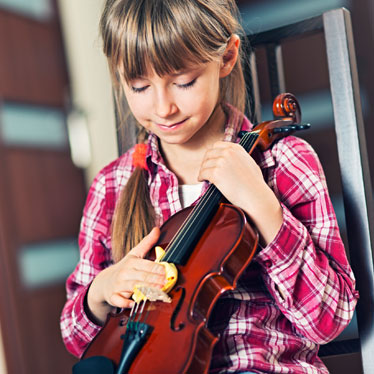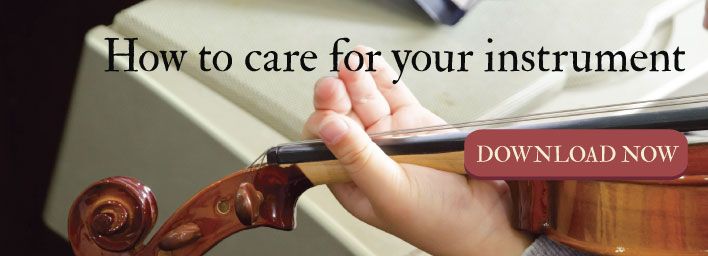
The violin is an expensive, rather delicate instrument. As a piece of artisan craftsmanship in its own right, it’s important for beginners to understand the instrument care tips and techniques that will maintain both its beauty and its sound quality.
In fact, knowing how to care for your violin will enhance your learning process. Continued maintenance helps increase your personal investment in the violin, and will help you identify problems before they have a chance to negatively influence your playing. A neglected instrument won’t sound good, and that will make it difficult for you to maintain your enthusiasm. However, by using these instrument care tips regularly, you’ll keep your violin in top condition so that it will be a joy to play and practice.
Instrument Care Tips: Basic Storage and Transport
Your violin is constructed of specific organic materials that are influenced by their surroundings. Therefore, your instrument is highly susceptible to atmospheric changes and environmental conditions. Extreme variations in temperature and humidity cause it to expand and contract, relative to the amount of moisture available for it to absorb. The amount of water contained in the wood parts of your violin effects its sound and construction. If it’s too dry, your instrument can develop cracks and seam separations that create buzzing or whistling noises.
- When not in use, store your violin and bow in a hard case, designed to prevent instrument damage. By keeping it secure, you guard against accidental injuries that can be very pricey to repair.
- Never store your violin in very hot or very cold areas. In fact, you should treat your instrument like a person or even a pet. The “golden rule” works well. If you wouldn’t want to be locked in a hot vehicle for hours or left outside overnight in below freezing temperatures, neither does your violin.
- If you live in a very dry climate or deal with long, dry winters, consider including a room humidifier or an in-case moisture regulator for your storage area.
- Always remove the shoulder rest or pad before storing your violin in its case, and make sure that your zippers, latches, or other closers are fastened securely before picking up your case.
- Slacken the bow hair before storing your bow. Leaving unnecessary tension on your bow can destroy its delicate camber (the vertical curve of the stick).
Instrument Care Tips: Cleaning
Again, because your violin is crafted from organic materials, it can absorb liquids and small particles. Keeping it clean will help prevent damages.
- After each playing session, gently wipe down your instrument and strings with a dry cloth to remove rosin dust and body oils. Lint-free cloths used for glasses and cameras work wonderfully, and they are small enough to fit inside most hard case compartments for easy access.
- Never use a commercial furniture polish, water, or wood cleaner on your violin. These items can weaken the glue, or ruin the acoustics of your instrument. A special polish is used for violins and can be purchased for less than $15, but as long as you keep your instrument wiped off, you shouldn’t need to employ it very often.
Instrument Care Tips: Mechanical Problems
Many instrument problems can be fixed fairly easily. However, sometimes, your violin will require a qualified professional to perform maintenance tasks. Remember, if you’re having difficulty fixing issues, it’s always better to have a luthier execute corrections than to risk further damage by doing it yourself.
- Sticking pegs are usually caused by swelling, but you can fix them by applying graphite (from a pencil) or a commercial “peg dope” to provide lubrication.
- Loose pegs are typically caused by improperly wound strings, but they can also be caused by fluctuating environmental conditions. “Peg drops” can improve the problem, but you may need to have your pegs refitted at your local instrument shop.
- Eventually your strings will need to be replaced. Depending on how often you play and practice and the type of strings you’re using, replace them when they start to require more frequent tunings, or when they lose their brilliance and warmth.
- If your soundpost (inside the violin) becomes dislodged, have a luthier reset it. Likewise, a broken bridge, cracks, or seam separations should be repaired by your instrument dealer.
Other Instrument Care Tips
- Observe your bridge position every time you tune your violin. It should be seated flush on the table, and form a precise right angle with the top.
- If the screw on your bow won’t tighten, never force it. The eyelet threads may have become stripped and it should be replaced by a luthier.
You can make sure that your violin stays in top condition by performing these basic instrument care tips. If you treat your instrument well, it can last for your lifetime and beyond.


